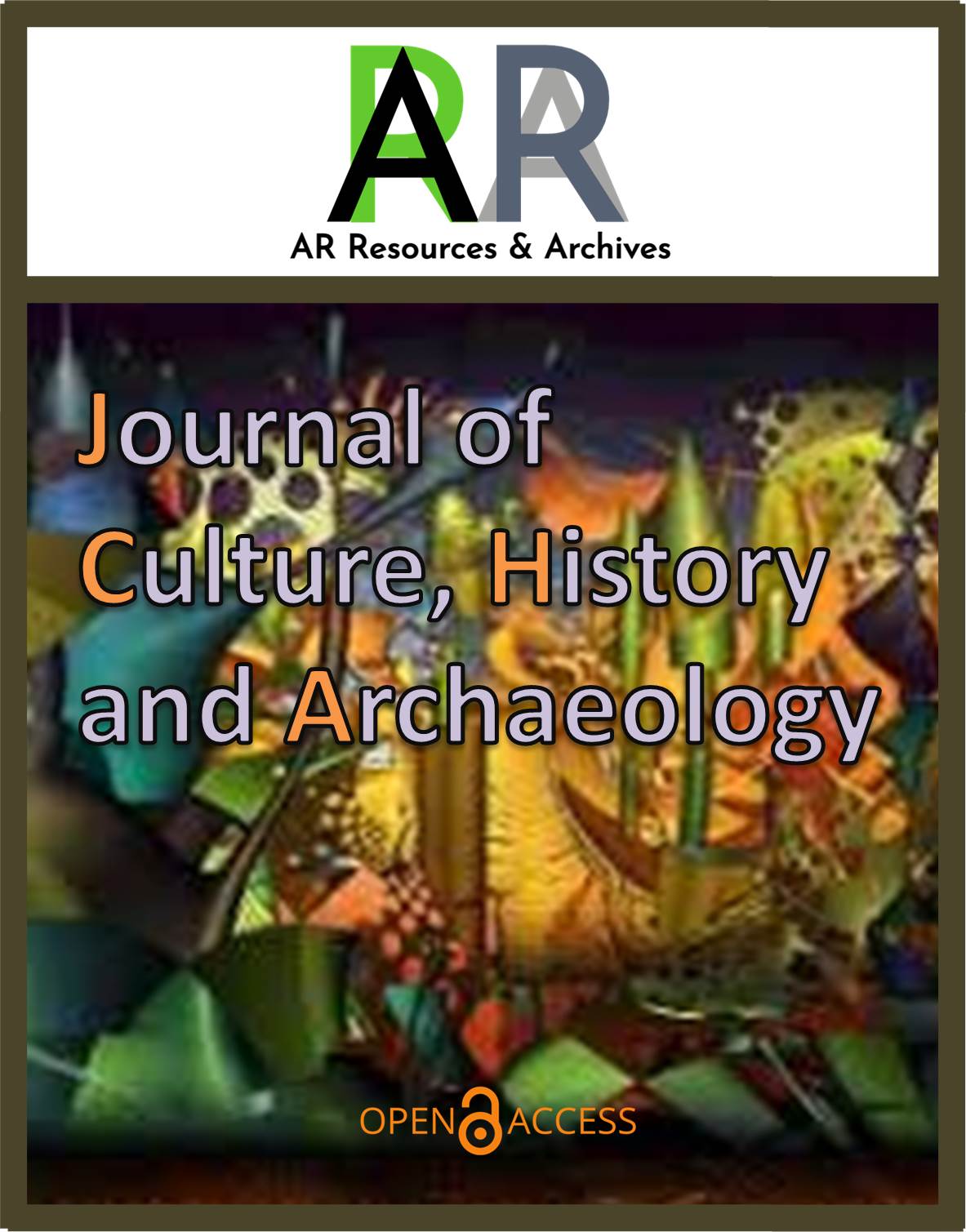Full Length Research Paper
A Conceptual Study of the Judgment of the Dead in Ancient Egypt
Stephen Hosea Vongdip and Jock Matthew Agai
Article Number - 6776C4EE5330E | Vol. 5(1), pp. 1-9, January 2025 |
Received: 6 November 2024 | Accepted: 21 December 2024 | Published: 3 January 2025
Copyright © 2025 Author(s) retain the copyright of this article.
This article is published under the terms of the Creative Commons Attribution License 4.0.

Abstract
The ancient Egyptians are
generally known to have been some of the ancient peoples that practiced and
spread the afterlife beliefs among the Peoples of the Ancient Near East. The
Egyptian views on judgment with respect to temporary or permanent punishment or
the feeling of guilt during the afterlife journeys is explained in this
research. Literatures that pertained to the ancient Egyptian concept of
judgement have been used in the search for their beliefs. The methodologies
employed in this research are conceptual and comparative. Using the ancient
Egyptian views of punishment in the afterlife with specific interest to the
period before Decline, the researchers argued that there is little or no
evidence to proof that the Egyptians were responsible for originating a belief
in the idea of permanent punishment after being judged in the afterlife. The
primary purpose of the research is to elucidate the ancient Egyptian view about
the concepts of temporary and eternal punishment in the afterlife. Keywords: Afterlife, Death, Destiny,
Heaven, Judgment, Netherworld, Punishment.
References
Bernstein, E. A. (1993). The
formation of hell: Death and retribution in the ancient and early Christian
world. Ithaca: Cornell University Press.
Cain, B. (2021). Jesus and
Osiris: How Christianity adapted Egyptian Myths. Medium, pp 1-24. https://medium.com/interfaith-now/jesus-and-osiris-how-christianity-adapted-egyptian-myths-c63ef171cd10
Cooper, J. S. (1992). The Fate of
Mankind: Death and Afterlife in Ancient Mesopotamia, In Death and afterlife:
Perspectives of World religions. New York: Greenwood Press, pp. 19-33.
Craffert, F. P. (1999). Meeting
the Living Among the dead: Burials, Tombs and the Afterlife. 1st ed.
Pretoria: Biblia.
Davies, J. (1999). Death,
Burial and Rebirth in the Religions of Antiquity. New York: Taylor &
Francis.
Doermann, R. W. (1962). Sheol in
the Old Testament. PhD Dissertation: Duke University.
Gardiner, E. (2015). About hell.
http://www.hell-on-line.org/AboutGEN.html
Garland, R. (2020). Mummification
Process in Ancient Egypt: Preparing for the Journey. Wondrium Daily, pp.
1-13. http://www.wondriumdaily.com/mummification-process-in-ancient-egypt-preparing-for-the-journey/
El-Shahawy, A. (2005). The
Funerary Art of Ancient Egypt: A Bridge to the Realm of the Hereafter.
Cairo: Farid Atiya.
Harpur, T. (1991). Life after
death. Ontario: M & S.
Harris, S. L. (2010). Exploring
the Bible. Boston: Mc Graw Hill.
Horn, S. H. (1981). Originally from Gunn, B., 1916, “The Religion
of the Poor in Ancient Egypt,” Journal of Egyptian Archaeology, 3,
88.
Hubert, V. R. (eds), (1996). The
Bible through the Ages. New York: Reader’s Digest.
James, T. G. H. (1976). An
Introduction to Ancient Egypt. New York: Harper & Row.
Jordan, P. (1976). Egypt the
Black Land. Edited by P. Johnstone & A. Ritchie. Oxford: Phaidon.
Lucas, J. O. (1948). The
Religion of the Yorubas: Being An Account of the Religious Beliefs and
Practice of the Yoruba Peoples of Southern Nigeria, Especially in Relation to
the Religion of Ancient Egypt. Lagos: C.M.S. Bookshop.
Lange, D. (2004). Ancient
Kingdoms of West Africa: Africa-centred and Canaanite-Israelite Perspectives. A
Collection of Published and Unpublished Studies in English and French. Dettelbach:
J. H. Roll.
MacGregor, G. (1992). Images
of Afterlife: Beliefs from Antiquity to Modern Times. New York: Paragon.
MadPenguin, (2024). What are the
8 Characteristics of Living Things?
https://www.madpenguin.org/what-are-the-8-characteristics-of-all-living-things/
Mark, S. (2008). “Osiris and the
Deceased,” UCLA Encyclopedia of Egyptology, pp. 1-7.
Ma´sùmián, F. (1996). Life
After Death: A Study of Afterlife in World Religions. Oxford: Oneworld.
May, G. H. (ed) (1983). Oxford
Bible Atlas 2nd edition. Oxford: Oxford University.
Mores, G. (2020). Will Hell
Really Last Forever? Answering Objections to Eternal Punishment.
https://www.desiringgod.org/articles/will-hell-really-last-forever
Murnane, W. J. (1992). Taking It
with You: The Problem of Death and Afterlife in Ancient Egypt. In Death and
afterlife: Perspectives of world religions. Edited by H. Obayashi. New
York: Greenwood Press, pp. 35-48.
Partridge, R. B. (1994). Faces of Pharaohs: Royal mummies and coffins
from ancient Thebes. The Rubison, London.
The Story of Osiris,
Isis and Horus: The Egyptian Myth of Creation, https://www.laits.utexas.edu/cairo/teachers/osiris.pdf
Turner, K. A. (1993). The
History of Hell. New York: Harcourt Brace.
Rensburg, H. J. & Eck, E.
(2008). “Hell Revisited: A Socio-critical Enquiry Into the Roots and Relevance
of Hell for the Church Today” In Hervormde Teologiese Studies, 64(3),
1499-1524.
Schwantes, J. S. (1969). A
Short History of the Ancient Near East, Grand Rapids: Cushing-Mulloy.
Spronk, V. K. (1986). Beatific
Afterlife in Ancient Israel and in the Ancient Near East. Neukirchener
Verlag in Kevelaer: Butzon & Bercker.
Usmonovna, O. G., &
Kholmurodovich, O. B. (2020). In the History of the Ancient World, the Death
Penalty. Journal NX – A Multidisciplinary Peer Reviewed Journal, 6(8),
100-106. https://repo.journalnx.com/index.php/nx/article/view/722
Yusuf, A. K. (2016). Execution of Judgment and Orders/Practice and
Procedures, National Judicial Institute, being a paper presented at the
refresher course for secretaries, protocol, officers, court registrars, process
clerks and bailiff’s; 9th-13th May, 1-32. https://nji.gov.ng/images/Workshop_Papers/2016/Refresher_Sec/s07.pdf
Watson, J. (2022). The Hell of
Ancient Egypt. pp. 1-6. www.touregypt.net/featurestories/hell.htm,
Willems, H., (1990). Crime, Cult
and Capital Punishment (Mo’alla Inscription 8). The Journal of Egyptian
Archaeology, 76, 27-54. https://doi.org/10.2307/3822006
Authors
Stephen Hosea Vongdip1
and Jock Matthew Agai2*
1Gindiri Theological
Seminary (GTS), affiliated to University of Jos, Nigeria.
2School of Religion,
Philosophy and Classics, University of KwaZulu Natal, South Africa.
*Corresponding
author. Email: [email protected]; [email protected]
How to Cite this Article
Vongdip, S. H. &
Agai, J. M. (2025). A Conceptual Study of the Judgment of the Dead in Ancient
Egypt. Journal of Culture, History and
Archaeology, 5(1), 1-9.
Full-Text (PDF)
View / DownloadBack to Articles
Back to Journals
ISSN: 2971-7752 (Online)
DOI:
Start Year: 2021
Published Articles: